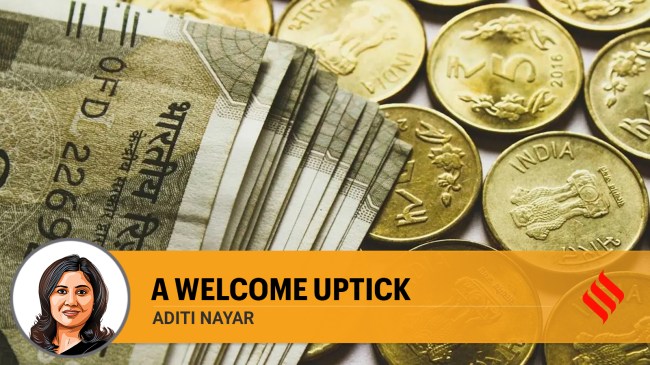Opinion Greater flow of resources to states augur well for capital spending
To boost the resources of state governments, the Centre has been stepping up allocation under the special assistance scheme as loan to states for capital expenditure
 To boost the resources of state governments, the Centre has been stepping up allocation under the special assistance scheme as loans to states for capital expenditure.
To boost the resources of state governments, the Centre has been stepping up allocation under the special assistance scheme as loans to states for capital expenditure. State governments are one of the key stakeholders of the Union Budget. Each state’s assessment of its revenues, expenditures and deficits is affected to varying degrees by the magnitude of tax devolution and grants it receives from the central government. In fact, tax devolution and grants together account for over 40 per cent of the revenues of several states. Additionally, since 2020-21, interest-free loans for capital spending from the Centre have emerged as a key source for funding for the states.
In the last five fiscal years, the actual tax devolution has varied meaningfully from the amount initially budgeted by the Centre in both directions. In 2024-25, the central government has modestly revised tax devolution up to Rs 12.9 trillion in its revised estimates, from the Rs 12.5 trillion indicated in the July Union Budget. This increase reflects payment on account of earlier periods as well as an uptick in the states’ share in income tax revenues in the revised estimates relative to the budgeted levels.
For 2025-26, tax devolution has been budgeted at Rs 14.2 trillion, around 11 per cent higher than last year. Given the extent of the tax foregone following the modifications in personal income tax, the Union government’s projections of growth in its gross tax revenues as well as the central tax devolution may turn out to be somewhat optimistic, which could mildly dampen the growth in tax devolution.
Additionally, grants from the Centre have displayed an uneven growth trajectory in recent years. The end of the GST compensation grants in 2022-23 and the decline in the Finance Commission-recommended grants, led to total grants to states declining by 13 per cent in 2023-24 to Rs 7.8 trillion. Further, grants have been marked down by nearly Rs 1 trillion in the 2024-25 revised estimates, led by lower grants for centrally sponsored schemes and GST compensation grants. Subsequently, total grants have been pegged at Rs 8.9 trillion in 2025-26, indicating a growth of around 14 per cent, exceeding the increase in tax devolution.
To boost the resources of state governments, the Centre has been stepping up allocation under the special assistance scheme as loans to states for capital expenditure. In the 2024-25 revised estimates, the allocation for the capex loan scheme is set at Rs 1.25 trillion, lower than Rs 1.5 trillion in the budget estimates. It is a positive sign that till January-end, the actual disbursement under this scheme had already touched Rs 1.1 trillion — this is similar to the amount transferred the year before.
Interestingly, all 28 states availed the amount under the capex loan scheme in 2024-25, including Kerala and Punjab, which had given it a miss the year before. Overall, Bihar, Madhya Pradesh, Uttar Pradesh and West Bengal together availed around 40 per cent of the amount disbursed till January end. The enhanced allocation of the capex loan scheme for next year at Rs 1.5 trillion is welcome. The disbursements under this scheme will be influenced by the mix of untied and tied loans, as well as the conditionalities related to the latter.
In an encouraging move, the Centre has decided to extend the conditional borrowing (linked to the completion of power-sector reforms) of 0.5 per cent of gross state domestic product (GSDP) to states in 2025-26, which was set to end this year as per the 15th FC’s recommendations. The extension of this additional borrowing reflects the Centre’s thrust to incentivise states to undertake key reforms in a crucial sector like power, a key component for overall economic growth. During FY2022-24, a number of states borrowed Rs 1.2 trillion under this conditional borrowing framework.
In our view, features of the recent Union budget, such as the increase in tax devolution (which is untied, as opposed to several grants that are tied to an end use), higher outlay under the capex loan scheme as well as the extension of the power sector reform-linked additional borrowing permission auger well for state capex.
Looking beyond the budget, state governments will await the recommendations of the 16th Finance Commission, especially with regards to the deficit and debt targets for the period FY2027-31. These recommendations are expected to be submitted prior to the Union Budget 2026-27. Aside from these targets, it will be interesting to see if the Centre continues with the capex loan scheme for the states during the 16th FC’s award period and whether such loans remain outside the net borrowing limit.
The writer is chief economist, head- research & outreach, ICRA






